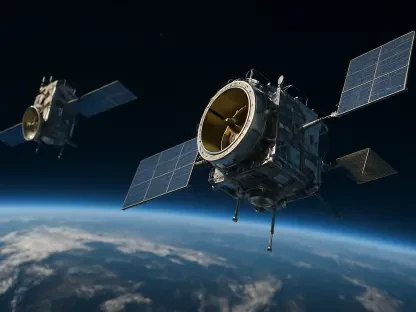Imagine a future where astronauts on the lunar surface can stream high-definition video directly to Earth, communicating seamlessly across the Moon’s rugged terrain despite its craters and challenging landscape. This vision is no longer a distant dream but a tangible goal as NASA embarks on a groundbreaking project to develop a robust wireless communication network for lunar exploration. At the heart of this initiative lies the ambition to support the Artemis missions, which aim to establish a sustained human presence on the Moon. Conducted at Johnson Space Center in Houston, this effort is a critical step toward ensuring that astronauts can maintain constant contact with mission control and each other. By pioneering advanced connectivity solutions, NASA is setting the stage for a new era of space exploration, where real-time data and immersive experiences could redefine how humanity interacts with the lunar environment. The implications of this work promise to extend far beyond the immediate missions, potentially shaping future endeavors in space.
Pioneering Wireless Technologies for Lunar Challenges
At Johnson Space Center, NASA engineers are rigorously testing cutting-edge wireless technologies to address the unique communication challenges posed by the lunar environment. Under the leadership of Raymond Wagner, principal investigator of the Lunar 3GPP project within the Exploration Wireless Laboratory, the team is experimenting with 3GPP standards, including LTE/4G and 5G, alongside Wi-Fi systems. These tests utilize commercial off-the-shelf hardware and open-source software to simulate lunar spacewalks, where engineers don backpacks equipped with radios, cameras, and antennas. The goal is to stream video, audio, and telemetry data over a private 5G network to a mock mission control, replicating real-world conditions. The Moon’s surface, with its craters and lunar regolith, often disrupts radio signals, making these simulations vital for identifying and resolving potential issues. This hands-on approach not only refines the technology for upcoming missions but also provides insights that could prove invaluable for future explorations on Mars and beyond, ensuring reliability in extraterrestrial settings.
Building a Connected Lunar Future
Looking ahead, NASA’s vision for lunar communication extends beyond temporary solutions to a more permanent infrastructure that could transform exploration. The upcoming Artemis III mission will feature a significant milestone with a 4G/LTE demonstration, transmitting high-definition video and audio directly from the lunar surface to Earth. Plans are also in motion to equip landers and rovers with network capabilities, turning rovers into mobile hotspots and astronaut spacesuits into personal communication devices akin to modern smartphones. Raymond Wagner has expressed ambitions for a truly connected Moon, envisioning cell towers dotting the lunar landscape to support sustained human activity. This forward-thinking strategy underscores the importance of robust communication for astronaut safety and scientific collaboration. By adapting commercial technologies for space use, NASA demonstrates a practical yet innovative approach, balancing immediate needs with long-term aspirations. The successful implementation of these systems marks a pivotal moment, laying the groundwork for an era where lunar exploration becomes as connected and accessible as life on Earth.









